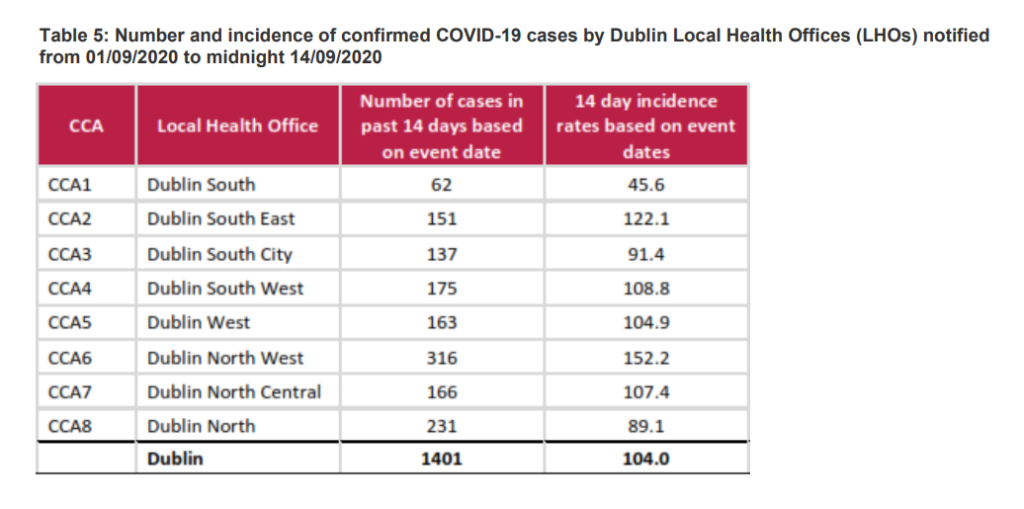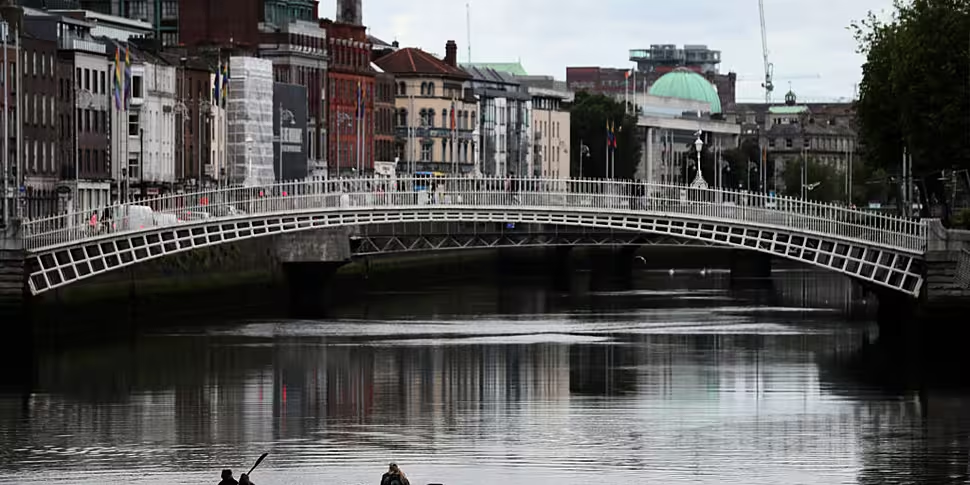Dublin North-West is the area of the capital with the highest coronavirus incidence rate, figures show.
The entire capital is currently at level two of coronavirus restrictions - but ministers have warned it could be moved to level three in the coming days.
NPHET is due to meet tomorrow to consider whether more measures are needed in Dublin.
Latest figures show there have been 104 cases per 100,000 people in the capital over the past 14 days.
However, the rate is higher in several parts of the capital.
HPSC figures show that Dublin North-West - which takes in the likes of Blanchardstown, Cabra, Castleknock and Finglas has the highest 14-day rate with 152 per 100,000.
That amounts to 316 cases in the region during the first two weeks of September.
 Image via HPSC
Image via HPSCThe rate is also high - 122 per 100,000 - in Dublin South East, which covers areas like Ranelagh, Donnybrook, Dundrum, Ballinteer and Sandyford.
In Dublin South, however - which includes Blackrock, Dalkey, Shankill and Dun Laoghaire - there are just 45 cases per 100,000, more in line with the rest of the country.
That region saw just 62 cases in the first 14 days of September.
It's thought there fewer frontline workers living there, with a higher share of employees working from home also a potential factor behind the lower numbers.
The rates in all eight regions are:
- 45 per 100,000 in Dublin South, which includes Dun Laoghaire, Blackrock, Stillorgan, Cabinteely, Foxrock, Dalkey, South County Dublin, Shankill and Loughlinstown
- 89 per 100,000 in Dublin North, which includes Artane(part), Coolock, Donaghmede, Darndale,Edenmore, Raheny, Kilbarrack, Howth, Sutton, Baldoyle, Portmarnock, Malahide, Swords, Lusk, Rush, Skerries, Balbriggan and Naul.
- 91 per 100,000 in Dublin South City, which includes South Inner City, Ringsend, Rathmines, Terenure, Churchtown and Rathfarnham
- 104 per 100,000 in Dublin West, which includes Clondalkin, Ballyfermot, Palmerstown, Lucan, Inchicore and Rathcoole
- 107 per 100,000 in Dublin North Central, which includes Ballymun, Drumcondra, Whitehall, North inner City, Fairview, Clontarf and Donneycarney
- 108 per 100,000 in Dublin South West, which includes Drimnagh, Crumlin, Walkinstown and Tallaght
- 122 per 100,000 in Dublin South East, which includes Sandymount, Ballsbridge, Ranelagh, Donnybrook, Milltown, Dundrum, Ballinteer, Sandyford, and Kilternan
- 152 per 100,000 in Dublin North West, which includes Cabra, Phibsborough, Finglas, Part Glasnevin, Castleknock, Blanchardstown, Mulhuddert and Smithfield
Tánaiste Leo Varadkar today said that no matter where people live in Dublin, they should stay inside the county if they can - advising them to cancel any 'discretionary journeys' if possible.
Moving Dublin to level three would mean further restrictions on gatherings, and fewer people being allowed at funerals and weddings.









